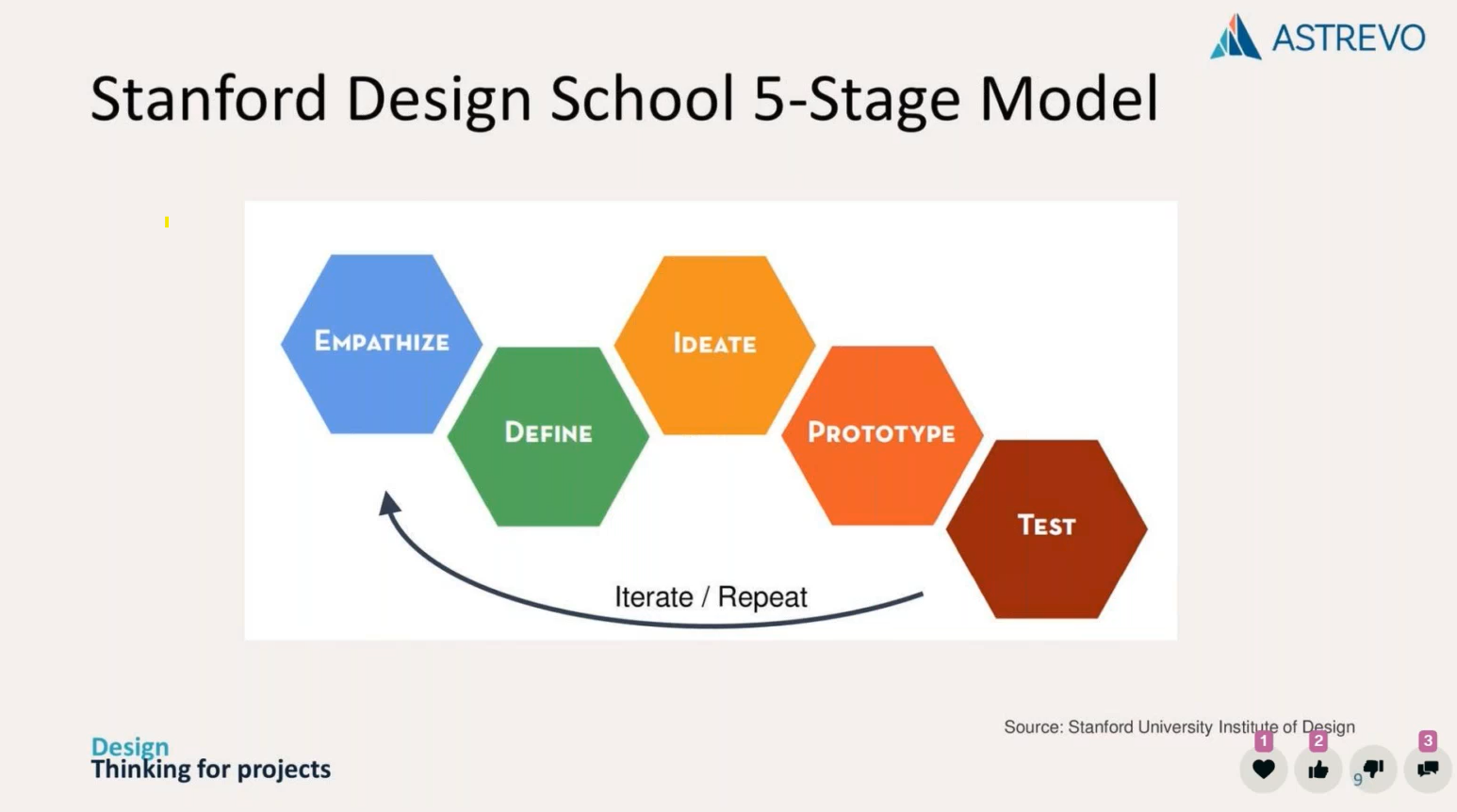Design Thinking
I recently attended the PMI UK webinar entitled “Integrating Design Thinking on Your Projects”, given by Bruce Gay of Astrevo. I was interested in the title, as our company does a lot of thinking about how to design our projects in terms of technical design and wondered if this would improve our methodology.
I did not expect it to be a subject so close to my heart; essentially it was about communication and a large part of it was about visual communication. I have had a special interest in this since I attended Penny Pullan’s Facilitation Course, Graphics Made Easy. It changed the way I communicate, especially in workshops but also on a personal basis. Essentially it was all about how to draw simple drawings which represent people or things symbolically, rather than accurately, which has allowed me to communicate more effectively.
One of the first things on the webinar that Bruce asked us to do was to draw 8 different objects in 60 seconds; home, coffee, mouse, sun, computer, bread, bicycle and flower. Try this exercise with your team and compare the results. You will be surprised at what is drawn and how they differ, especially if your team is scattered across 5 continents. You will see that visual communication allows for more accurate communication and misunderstandings are quickly highlighted.
The other fascinating topic for me was the emphasis on putting users at the centre of design thinking. Bruce suggests developing user personas to ensure solutions are customer centric. A user persona formally documents needs and pain points. In the type of capital projects we run, it is not always possible to talk to all users at the pre-project phase due to the sensitivity of the project. However, when we can, it helps to understand how line operators and managers run their production lines, what problems they face and what they would like to see changed to improve efficiency. By understanding what causes them pain and what could be done to take the pain away we get a much better solution. It always ensures a more accurate scope, schedule and budget. Quality is always better, the project benefits are realised earlier and the users take ownership of the results.
Where projects are developing a new process or product then the Stanford School 5-Stage Model is an effective tool. It is a very simple model, but perhaps not so simple to put into practice. Again, it involves working with and communicating accurately with the end users to come up with the best solutions.

If you would like to learn more about this subject then I recommend you follow Bruce Gay, PMP and explore his website.
Also, the PMI UK Chapter are running an excellent series of digital events. If you are interested in learning what is coming up, please look here.
.png)